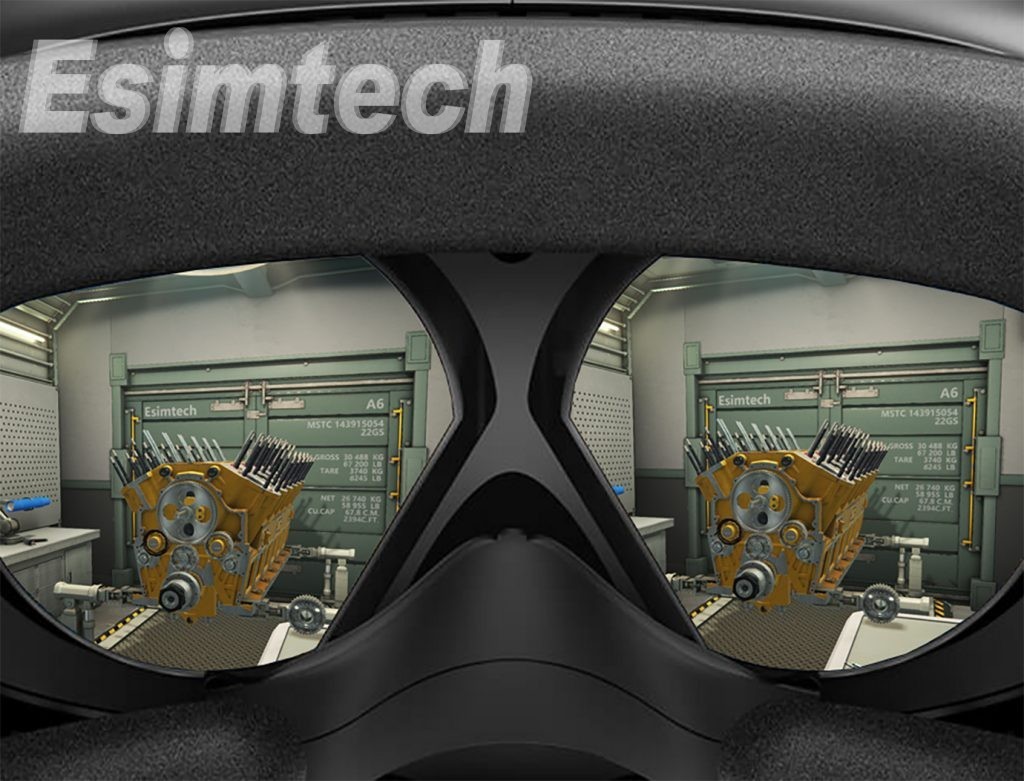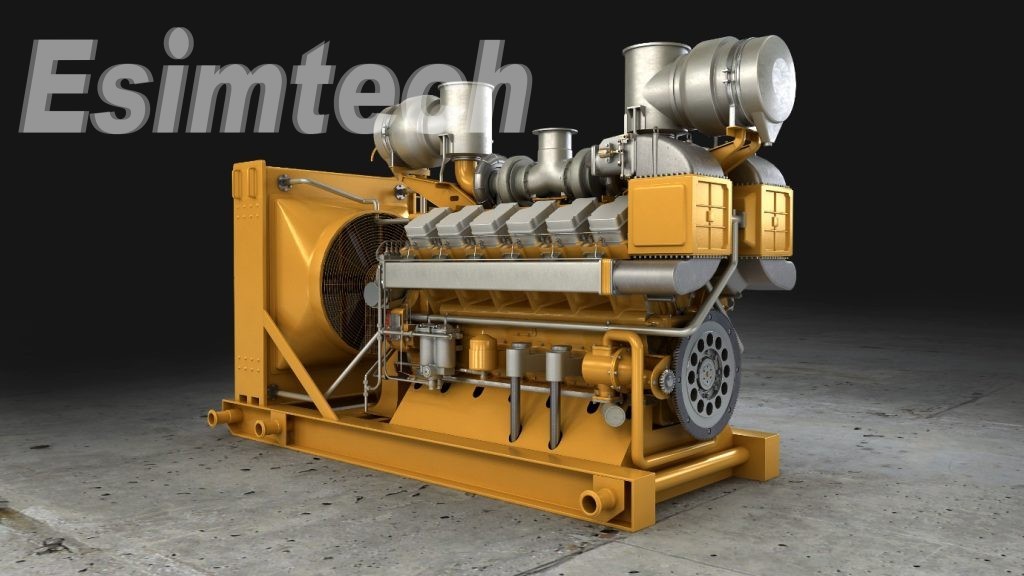What Is Drilling And Well Control Simulation System
With the continuous development of oil and gas development, the situation of various oil wells and oilfields has become more complex and the risks faced by the construction site have increased. The drilling and well control simulation system has been widely used for the experiment, training and assessment of drilling technicians. The traditional field training is limited by the site and visual angle and the training effect is not ideal. VR virtual reality technology provides a perfect solution for drilling well control training.
VR virtual reality technology cooperates with 3D interactive equipment to simulate the well site environment, equipment and facilities, operators, and work processes, as well as the formation structure, borehole trajectory, drilling targets, and other objects that are prone to be observed with the naked eye, which are both simulated and beyond the limitations of reality, and the display effect is accurate, intuitive, and diverse. Greatly reduce the design cost and development cycle.
Why Choose Drilling And Well Control Simulation System
The drilling and well control simulation system fully covers the knowledge and theory of multiple disciplines, multiple types of work and multiple equipment involved in the system engineering, and the teaching system is complete. Students do not need to measure the abandoned oil fields step by step.
The virtual reality system connects with external handheld devices and realizes the structure display through dynamic viewing, moving, rotating and scaling operations. The work flow is mainly demonstrated in the form of video and audio.
In comparison to offline training, it is not limited by space or time as a simulator training that can be carried out by entering a virtual classroom online. It also establishes clear and consistent evaluation standards for the training process, which promotes unified management. Furthermore, online training methods can realize some related dangerous operations and some advanced training that are difficult to achieve in offline training through virtual and realistic scene simulation.
The system also sets downhole accident mode to simulate the real process caused by wrong operation. The trainees can receive timely error prompts and feedback of training results to deepen the study of safety concepts and emergency measures.
Furthermore, teachers can train multiple people at the same time, which helps save resources. Students can also conduct post-class consolidation reviews at any time after they have completed their learning.
In addition to training personal practical operation ability, the handling of emergencies requires seamless cooperation of all links. The VR virtual reality remote information sharing system, developed in combination with the Internet, spans workshops and departments, supporting multi-user interaction and collaboration, and greatly improves the effectiveness of department collaboration, workflow mode, sharing mode.
It is not necessary to select a relationship between the online simulator training system and the offline training system.

Applications Of Drilling And Well Control Simulation System
Rig installation, well logging, oil and gas gathering and transportation, fracturing and acidizing, coiled tubing, oil and gas production, transportation, downhole operations, emergency exercise simulator, and other areas are included in the applications of drilling and well control simulation, with a wide range of 3D oil & gas animations, such as drilling and well control equipment disassembly and working principle animation.

3D Technologies Widely Used In Drilling And Well Control Simulation System
To achieve realistic simulation and 3D interaction of drilling drill scenes, personnel conditions, equipment and facilities, and environmental conditions, 3D simulation, 3D interaction, and other technologies are used.
Through virtual reality technology, these simulation training systems can automatically collaborate with trainers to complete various exercise projects, have realistic scenes, and provide a good user interaction experience.
Work Process Of Drilling And Well Control Simulation System
Drilling and Well Control Simulation System is a valuable tool for improving the safety, efficiency, and effectiveness of drilling operations in the oil and gas industry. By providing a safe and controlled environment for training and practice, Drilling and Well Control Simulation System can help to reduce accidents and equipment damage, improve operator skills and competency, and promote continuous improvement in drilling operations. The work process of a Drilling and Well Control Simulation System involves several steps:
- Design and setup: The first step is to design and set up the Drilling and Well Control Simulation System. This typically involves selecting the appropriate simulators, control panels, and computer systems, and configuring them to simulate the desired drilling scenarios and conditions.
- Operator training: Once the Drilling and Well Control Simulation System is set up, operators undergo training to learn how to use the simulator and control panel. This training typically covers drilling techniques, well control, and emergency response procedures.
- Simulation: With the Drilling and Well Control Simulation System in place and operators trained, simulations can begin. During simulations, operators practice their skills and techniques by controlling the simulator and responding to various scenarios and conditions.
- Performance evaluation: During simulations, the Drilling and Well Control Simulation System provides real-time feedback on operator performance. This feedback can include data on drilling parameters, well control, and emergency response procedures, allowing operators to identify areas for improvement.
- Continuous improvement: Based on the feedback provided by Drilling and Well Control Simulation System, operators can refine their skills and techniques through additional training and practice. This can help to promote continuous improvement and innovation in drilling operations.
Advantages Of Drilling And Well Control Simulation System
The advantages of using a Drilling and Well Control Simulation System in the oil and gas industry are numerous. Here are some of the key advantages:Safety: Drilling and Well Control Simulation System provides a safe and controlled environment for operators to practice their skills and techniques. This helps to reduce the risk of accidents, injuries, and equipment damage during drilling operations.
Realistic simulation: Drilling and Well Control Simulation System simulates real-world drilling scenarios and conditions, allowing operators to practice in a realistic and immersive environment. This helps to improve their skills and confidence, making them better equipped to handle actual drilling operations.
Cost-effective: Drilling and Well Control Simulation System provides a cost-effective alternative to traditional training methods, such as on-the-job training or expensive drilling schools. By reducing the need for costly equipment and resources, DWCSS can help to lower operational costs and improve profitability.
Improved efficiency: Drilling and Well Control Simulation System can help to improve the efficiency and productivity of drilling operations. By providing operators with the opportunity to practice and refine their skills, Drilling and Well Control Simulation System can help to reduce the time and resources needed to complete drilling projects.
Continuous improvement: Drilling and Well Control Simulation System provides instant feedback on performance, allowing operators to identify areas for improvement and refine their skills. This can help to promote continuous improvement and innovation in drilling operations.
Future Of Drilling And Well Control Simulation System
The future of Drilling and Well Control Simulation Systems looks promising, with the potential for significant advancements in technology and application. Here are some of the key areas where DWCSS is expected to evolve in the future:Integration with advanced technologies: Drilling and Well Control Simulation System is likely to become more integrated with other advanced technologies such as artificial intelligence, machine learning, and big data analytics. This integration will allow for more sophisticated and accurate simulations and feedback mechanisms.
Remote and virtual training: Drilling and Well Control Simulation Systems will increasingly be used for remote and virtual training, allowing operators to practice their skills and techniques from anywhere in the world. This will help to reduce the need for costly and time-consuming travel and provide more flexibility for operators.
Customized training programs: Drilling and Well Control Simulation System is expected to become more customizable, with the ability to create customized training programs that are tailored to the specific needs and requirements of individual operators and organizations.
Environmental and safety simulations: Drilling and Well Control Simulation System is expected to increasingly simulate environmental and safety scenarios such as well blowouts, fires, and gas leaks. This will help to improve the safety of drilling operations and provide operators with the skills and knowledge needed to respond effectively to emergency situations.
Real-time data analytics: Drilling and Well Control Simulation System is expected to become more sophisticated in terms of real-time data analytics. This will allow operators to make more informed decisions during drilling operations and respond more effectively to changing conditions.
